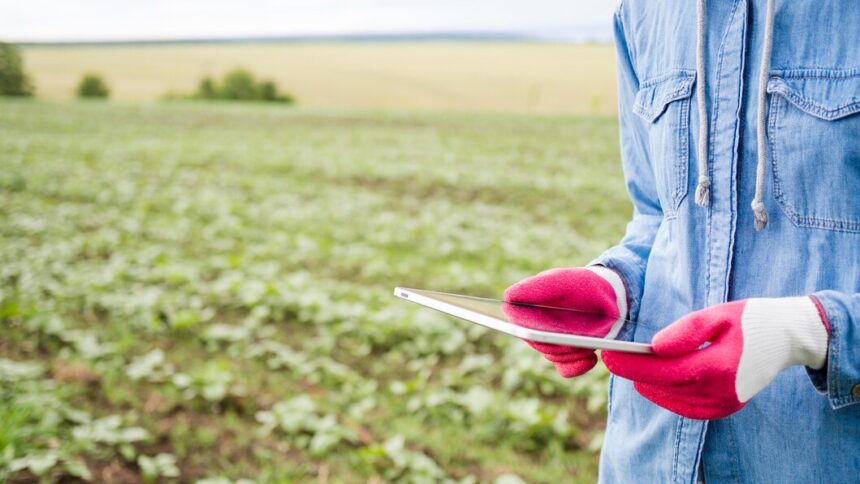Effective crop monitoring is key to ensuring the success and sustainability of farming operations. It allows farmers to track growth, identify potential problems early, and make informed decisions that can enhance yield and profitability. In South Africa, where farming conditions vary across regions, it’s essential for farmers to adapt crop monitoring strategies that suit their specific needs. Here’s a guide on how to effectively track the growth and health of your crops.
1. Use Satellite Imagery and Drones
Modern technology has revolutionized crop monitoring. Satellite imagery and drones offer a bird’s-eye view of your fields, helping you assess plant health, soil conditions, and water distribution. Drones equipped with multispectral cameras can detect stress in plants, allowing you to address issues such as nutrient deficiencies or irrigation problems before they escalate.
2. Adopt Remote Sensing Technology
Remote sensing uses sensors to detect and measure crop health from a distance, providing valuable data on crop condition, growth stages, and potential stress factors. Normalized Difference Vegetation Index (NDVI) is one common metric derived from remote sensing. It measures plant health by analyzing how much light the plants absorb and reflect, which can indicate areas of concern like drought stress or disease.
3. Monitor Soil Health Regularly
Healthy crops require healthy soil. Soil testing is vital to understanding nutrient levels, pH balance, and moisture content. South African farmers should conduct regular soil tests to track nutrient levels such as nitrogen, phosphorus, and potassium, and adjust fertilization accordingly. Investing in soil sensors can also provide real-time data on soil moisture and temperature, helping optimize irrigation and prevent water wastage.
4. Track Growth Stages
Tracking your crops through different growth stages is essential for effective crop management. This includes monitoring germination, vegetative growth, flowering, and fruiting. Keeping detailed records of each stage can help identify problems early, determine the best time for pest control, and schedule irrigation and fertilization for maximum benefit.
5. Use Digital Farming Platforms
Digital farming platforms and mobile apps allow farmers to record, analyze, and track the progress of their crops in real-time. South African farmers can benefit from platforms like Agri-tech solutions that offer weather forecasts, pest management alerts, and field monitoring tools. These platforms consolidate data, making it easier to manage farms more efficiently and improve decision-making.
6. Conduct Regular Field Inspections
Walking through your fields and conducting physical inspections remains one of the simplest yet effective ways to monitor crop health. Look for visible signs of stress such as yellowing leaves, stunted growth, or pest damage. Frequent inspections help spot issues early and allow you to take corrective measures before they affect the entire crop.
7. Monitor Weather Conditions
South Africa’s diverse climate means that weather conditions can significantly impact crop growth and health. Install weather stations on your farm to monitor temperature, humidity, rainfall, and wind speed. This data can help you predict how your crops will react to specific conditions and adjust your irrigation and protection methods accordingly.
8. Implement Integrated Pest Management (IPM)
Pests can severely affect crop health and yield. Implementing an Integrated Pest Management (IPM) system combines biological, cultural, mechanical, and chemical practices to control pest populations. Regular scouting and monitoring for pest activity is crucial, allowing farmers to apply control measures only when necessary and reducing reliance on harmful chemicals.
9. Utilize Precision Irrigation
Water is a precious resource in South Africa, and efficient irrigation practices are critical for healthy crops. Precision irrigation involves monitoring soil moisture levels and only applying the exact amount of water your crops need, reducing wastage. Tools like drip irrigation systems, moisture sensors, and weather-based irrigation scheduling can ensure that your crops get optimal water supply throughout their growth cycle.
10. Analyze Crop Data for Trends
After each growing season, take time to review and analyze the data you’ve collected on your crops. Identify trends such as how different crops performed under varying weather conditions or how specific interventions affected yield. This information can guide your decisions in future seasons, helping you refine your crop monitoring methods and improve overall efficiency.
Crop monitoring is a vital part of ensuring the health and productivity of crops in South Africa’s challenging and varied farming conditions. By integrating modern technology with traditional practices like field inspections and weather monitoring, farmers can gain better insight into their crops’ health and respond swiftly to any issues. With a focus on precision, data-driven decisions, and sustainability, South African farmers can maximize their yields while preserving resources for future generations.
Join 'Farmers Mag' WhatsApp Channel
Get the latest Farming news and tips delivered straight to your WhatsApp
CLICK HERE TO JOIN






